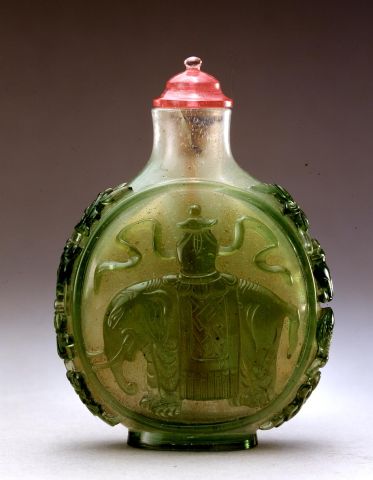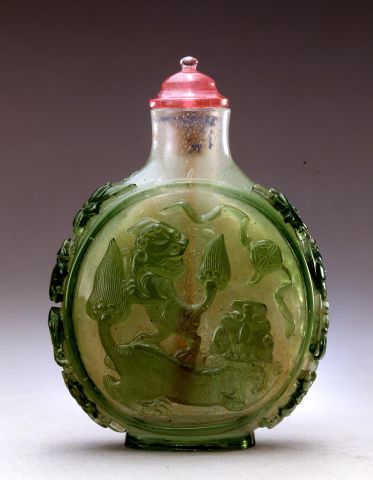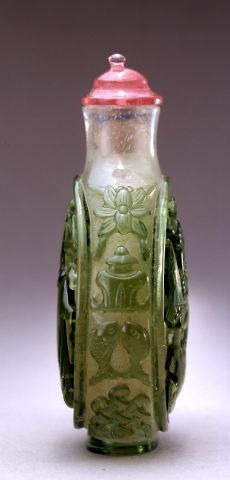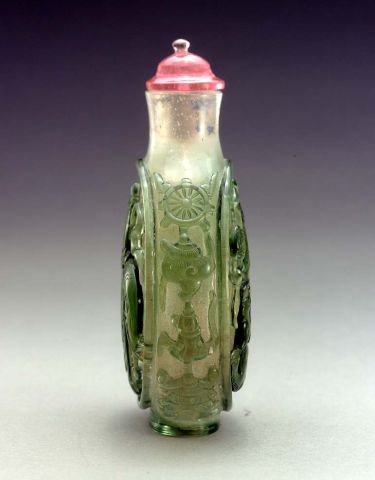



Bottle ID: 00326
CLEAR W/GREEN TRANSLUCENT OVERLAY, ELEPHANT
Date: 1750-1800
Height: 64 mm
Glass, of flattened rounded form with a slightly everted wide mouth, resting on a neatly finished splayed footrim, overlaid with transparent 'West Lake' green on a bubbly clear ground and carved within a vignette with a saddled elephant carrying a decorated vase; the reverse carved within a vignette with a Buddhist lion and her cub playing with a brocade ball, the sides carved with the bajixiang ("Eight Auspicious Attributes").
Similar Examples:
Crane Collection nos. 146, 220 and 498.
Crane Collection nos. 169, 210 and 256
Sotheby's, New York, September 15, 1998, The Neal W. and Frances R. Hunter Collection, lot 122.
Christie's, New York, September 19, 2007, lot 697, The Meriem Collection.
Provenance:
Clare Lawrence Ltd.
Sotheby's, New York, March 1997, lot 70
A Canadian Collection
Exhibited:
Annual Convention ICSBS Toronto, October 2007
The design on this bottle illustrates perfectly the Chinese artistic ideal of xiao zhong jian da ("perceiving greatness through smallness"); by depicting motifs like the elephant and vase, the Buddhist lion and her cub and the bajixiang. The elephant was regarded as an animal with the highest moral standards and is depicted here to symbolize prevailing peace. The Buddhist lion and cub symbolize good wishes for an official promotion. The bajixiang, or Eight Auspicious Attributes, are shown in the following order on the sides of this bottle: the lotus, the vase, the twin fish, the endless knot and on the other side, the wheel, the conch, the umbrella and the canopy. Although these were common subjects seen frequently on larger works of art in the Imperial Palace, including objects made of jade, porcelain and bronze, the combination of the Buddhist subject matter together with the elephant is rare on snuff bottles.
The neck of this glass bottle has an internal fissure running towards its mouth. Fissures like this occur sporadically in glass snuff bottles and are likely to be the result of stress during the manufacturing process. A number of bottles with internal cracks suggest that the thickness of the glass may contribute to this problem as the thicker the glass, the longer it takes to cool. A second contributing factor in overlay glass may be the slightly different ingredients in separate colors of glass where cooling times may vary.

 English
English 中文
中文